On the evening of March 14, XII Corps had already got most of its 5th and 90th Divisions over on the right bank of the
Mosel at Treis, eight miles below Cochem. Eddy then wasted no time in unleashing his 4th and 11th Armoured Divisions.
To his right, XX Corps was attacking towards Saint Wendel, in the rear of the Westwall. At last, at dawn on March 15, H-hour came for the 7th Army. Its VI Corps (3rd Algerian, 36th, 42nd, and 103rd Divisions and 14th Armoured Division), went into the attack on the Moder front. Its 15th Division attacked the Westwall, its left towards Saarlautern, the French Sarrelouis, in contact with XX Corps.
By March 16, the 4th Armoured Division had advanced 32 miles in 48 hours. As it crossed the Nahe, near Bad-Kreuznach, it clashed violently with the 2nd Panzer Division (Major-General von Lauchert). But Patton was aware of the audacity of Gaffey, his ex-chief-of-staff, and had not let him fight it out alone. Opportunely reinforced, the 4th Armoured Division defeated the desperate counter-attack and moved forward again. By March 19, it had arrived seven miles west of Worms and 12 miles south-west of Mainz. On the same day, XX Corps, to which the 7th Army had given the 12th Armoured Division, under Major-General R. R. Allen, pushed its armoured spearheads as far as 15 miles from Kaiserslautern. Since the crossing of the Mosel, the 3rd Army had lost, including accidents, only 800 men, while it had taken 12,000 prisoners.
Forty-eight hours later, in XII Corps, the 90th Division, which had lost two commanders in Normandy, was busy mopping up Mainz, the 4th Armoured Division was occupying Worms, and the 11th was pushing on to the south of the city.
In XX Corps, Major-General Walton H. Walker had thrown his 12th Armoured Division into Ludwigshafen and was pushing his 10th towards Landau. Just as the difficult terrain of the Eifel had been no impediment, that of the Huns-ruck, which is just as bad, had not been able to hold back the elan of the 3rd Army, supported flexibly and efficiently by Major-General Otto P. Weyland’s XIX Tactical Air Command of the 9th Air Force.
Facing the German 1st Army, the American 7th Army had had a considerably more difficult task. There is some evidence of this in a note made by Pierre Lyautey who, as liaison officer, was with the 3rd Algerian Division (General
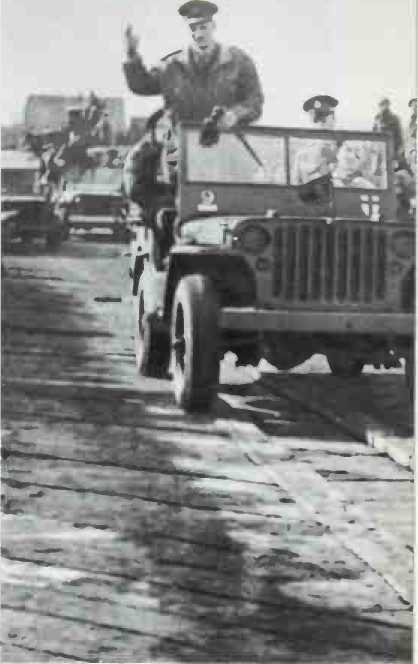
A General Sir Miles Dempsey, commander of the British 2nd Army, on an inspection tour of his front line units.
2109
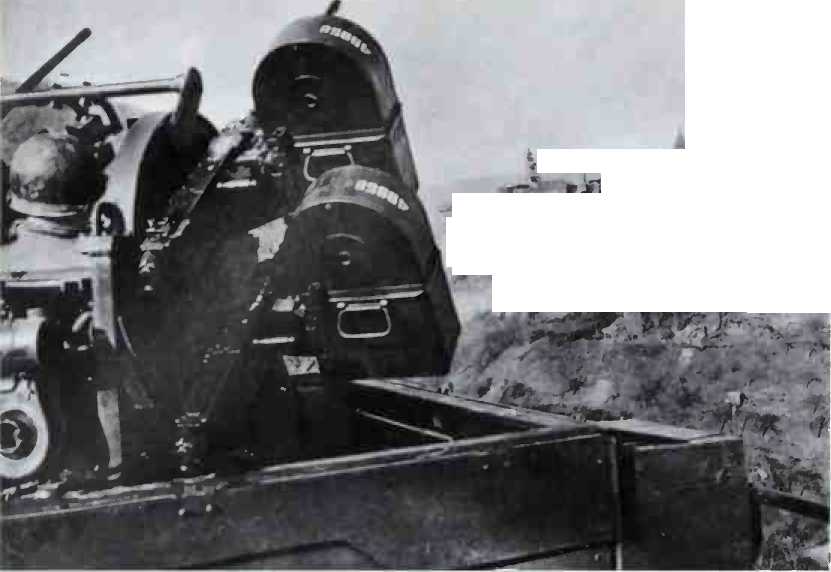
A An American quadruple.5-inch A. A. mounting on a half-track chassis on watch against German aircraft near the Chateau de Vianden in Luxembourg.
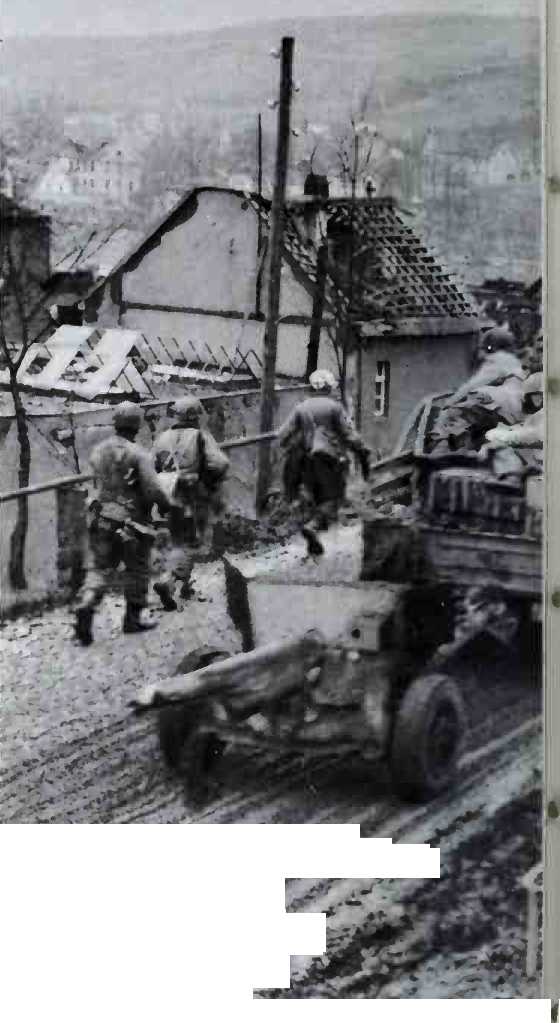
A
¦m I I
' II M * 1
T': "/-MEvJait'J# ¦'¦ •?-'
Guillaume), when it attacked across the Moder.
"March 15: Artillery preparation. The planned 2,000 shells light up the scene. Attack by the 4th Tunisians. Skirmishes. The leading company runs, at seven in the morning, from ruin to ruin, lonely wall to lonely wall, reaches the railway, dives into the underground passage and jumps up into the mangled and dismantled gasworks. Violent reaction from German artillery, mortar, and machine guns. Impossible to move out. The whole sector is alive with fire. The company shelters in the gas-works. First one tank explodes, then another. Beyond the church, the scene is one of a major offensive: stretcher-
Bearers, stretchers, limping men walking around with white cards, a smell of blood, stifling heat. The last cows of Oberhoffen-Benares are in their death agony among the rubble.’’
It took four days for Major-General Edward H. Brooks, commanding VI Corps, to take back from the Germans the ground lost in lower Alsace as a result of Operation ’’Nordwind”. Then he closed in on the Westwall between the Rhine and the Vosges.
Both General de Gaulle and General de Lattre had no intention, however, of allowing the French Army to be restricted to a purely defensive function on the left bank of the Rhine. They wanted to see it play a part in the invasion of the Third Reich. While awaiting a definite decision from S. H. A. E.F., General de Gaulle writes, "General Devers, a good ally and a good friend, sympathised with de Lattre’s wishes’’.
That is why, on March 18, General de Monsabert received command of a task force comprising the 3rd Algerian Division and two-thirds of the 5th Armoured Division; aiming for Speyer, it would give the French 1st Army a front over the Rhine in Germany.
The three infantry divisions of the United States VI Corps took three days and lost 2,200 men to overcome that part of the Westwall allotted to them as objective, but using its infantry and engineers
2110
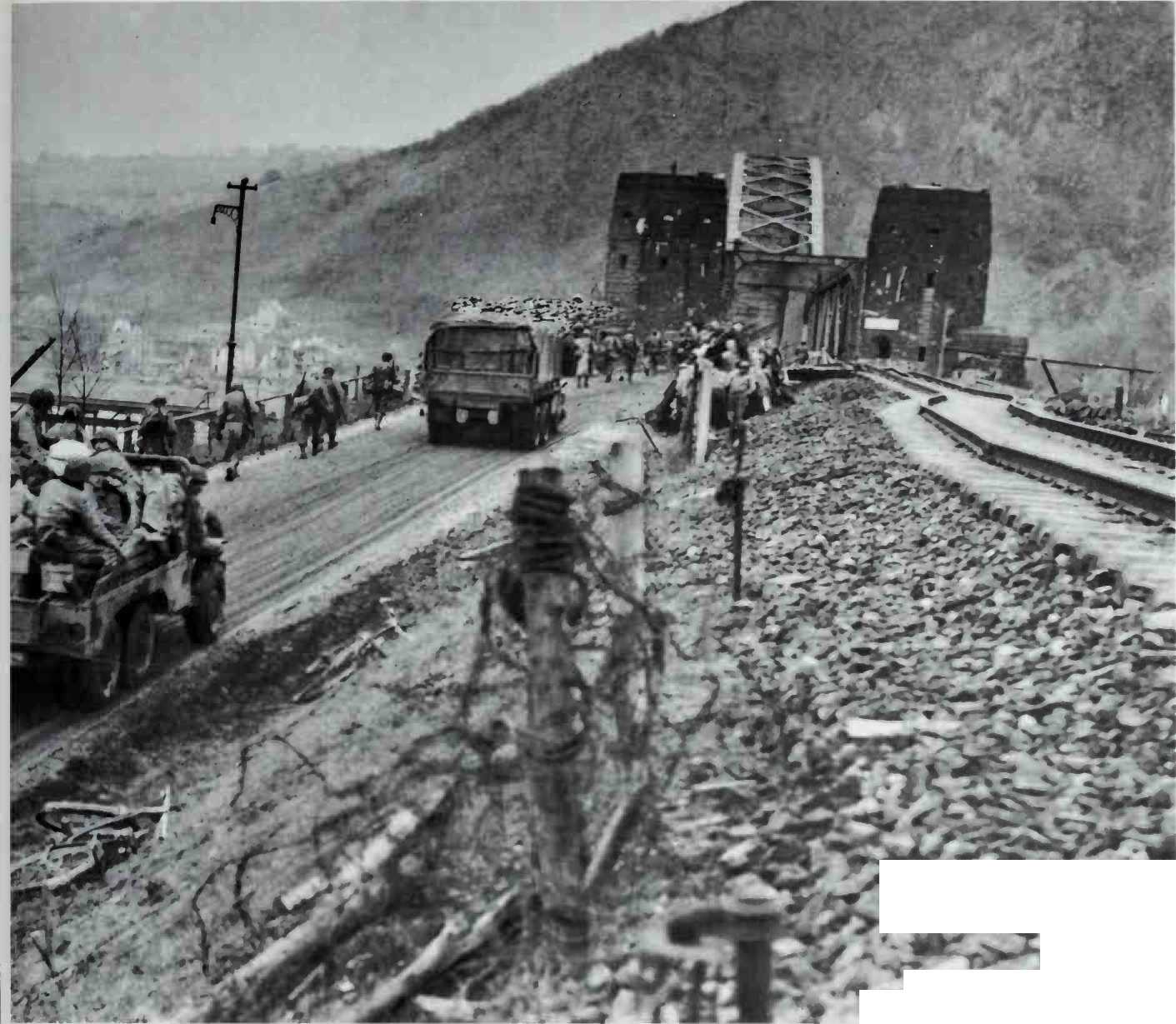
A The great prize. Men and vehicles of the American 1st Army pour across the Ludendorff raihvay bridge over the Rhine at Rcrnagcn to establish an invincible bridgehead on the right bank.
In turn, Brooks finally pierced the defences between Wissembourg and Pirmasens. As for Monsabert, he had difficulty in front of the Bienwald. Nevertheless, his tanks were around Maximiliansau opposite Karlsruhe by the evening of March 24.
Patch had taken Landau the day before, so the Battle of the Palatinate, the third act of the Battle of the Rhine, was drawing to its end.
The battle had been conducted to Eisenhower’s complete satisfaction. Between February 8 and March 24, the enemy had lost 280,000 prisoners, the remains of five German armies which had crossed back over the Rhine between the German-Dutch and Franco-German frontiers. Army Group "B” had suffered most. Patton alone could claim 140,112 prisoners, against the 53,000 taken by the 21st Army Group in Operation "Veritable/ Grenade”. Therefore Eisenhower had proved his superiority not only over Hitler’s arms hut also over Montgomery's arguments.
Furthermore, on the night of March 22/23, Patton also succeeded in crossing the Rhine as Bradley had recommended, profiting from the Germans’ disorder. The banks there being suitable, Patton chose the stretch near Oppenheim, which
2111
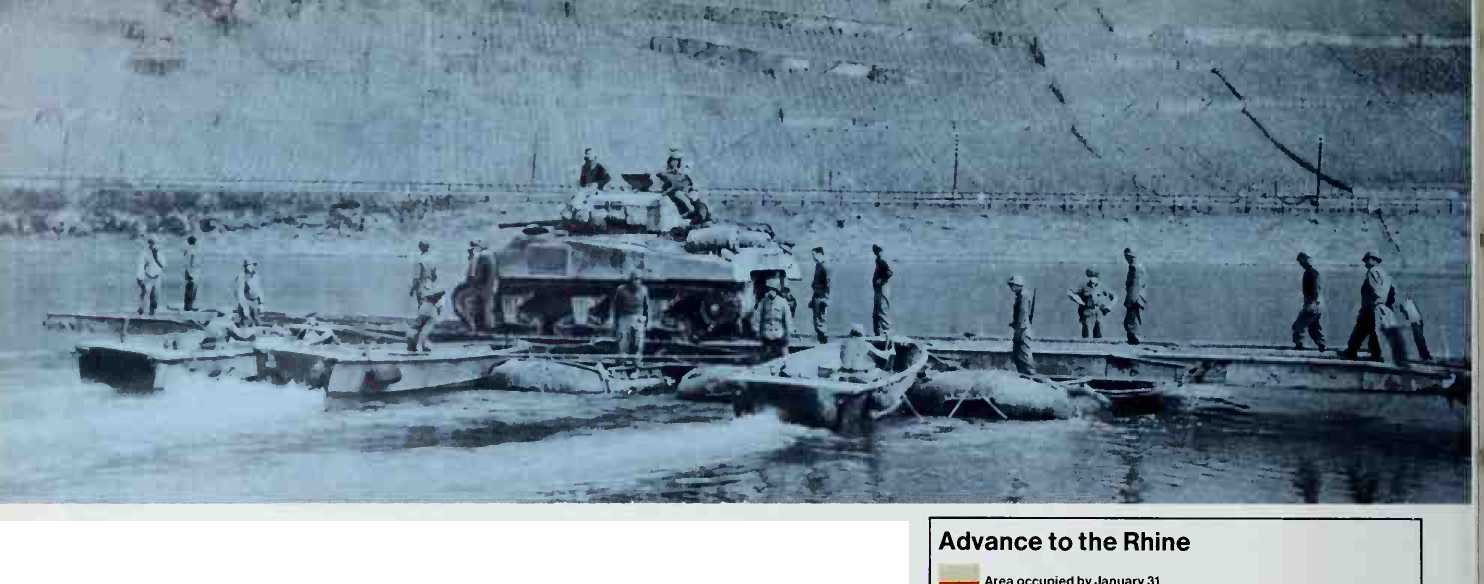
A A Sherman of the U. S.
Army is ferried across a river on a section of pontoon bridge pushed by motor-boats.
> The Allied advance to the Rhine, and the establishment of the first bridgeheads at Rernagen and Oppenheim.
Was occupied by the 5th Division (Major-General S. LeRoy Irwin), half-way between Worms and Mainz.




 World History
World History









